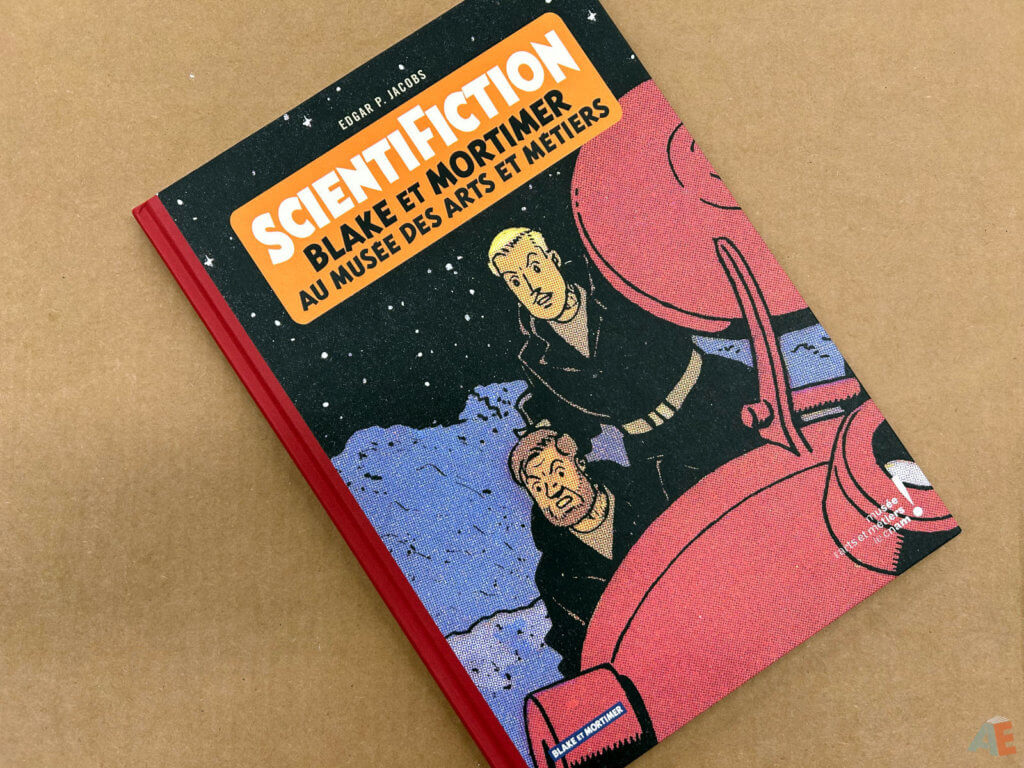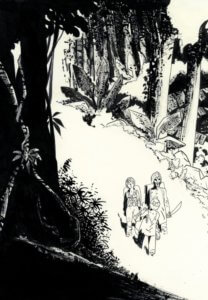
Luxurious large format edition in black and white drawing with a numbered and signed ex-libris in a limited edition of 399 copies.
An emblematic character from the Dupuis catalog in the early days of the Repérages collection, Théodore Poussin has been sailing the seas of China and elsewhere since his first adventure in the Spirou newspaper in 1984. We can bet that at the precise moment when he agreed to embark on Cape Padaran on January 2, 1928 to sail towards the legendary and distant Indochina, the young office worker, as reserved as he was clumsy, could not imagine the incredible destiny and the dangers that awaited him in the Orient.
Nearly forty years later and his return with great fanfare aboard the Amok for its final voyage, our intrepid hero today finds himself caught in the crossfire between the Singapore authorities who are detaining his crew and the British army who wants to get hold of him because of his acts of piracy. Taking refuge with the beautiful Aro Satoe, he tries to escape the forces of the perfidious Albion and sinks into the labyrinthine twists and turns of the mysterious island.
Between great adventure, introspective journey, assessment of a life full of twists and turns and an incredible twist of theater at the end of this new album, Frank Le Gall gives us here one of the most beautiful and exotic stories of his endearing hero.
- Dupuis, January 27, 2023
- ISBN 9791034767793
- 40 cm x 30 cm (11.8″x15.75″), 80 pages 150gsm Munken, hardcover
- 149,00€
- Order online: Amazon
As with all AE format material (Artist’s Editions, Artifact Editions, Gallery Editions, Art Editions, Studio Editions, etc.), this is a collection of classic comic material and I’ll be reviewing the book and not the story. For a complete list of all current and announced editions, with review links, please visit our Index. Also, see What is an Artist’s Edition and our Artist Index. This site contains affiliate links for which I may be compensated.


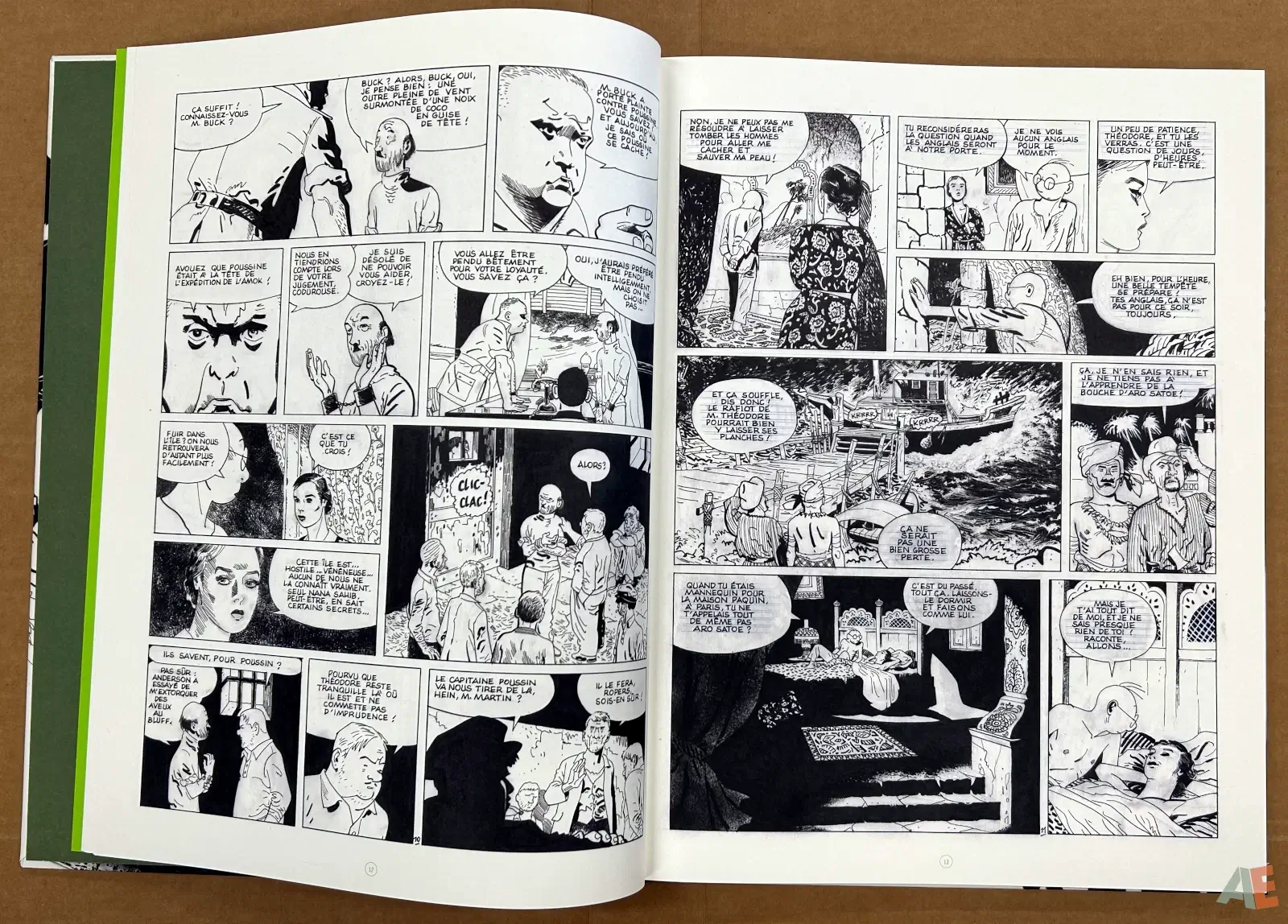
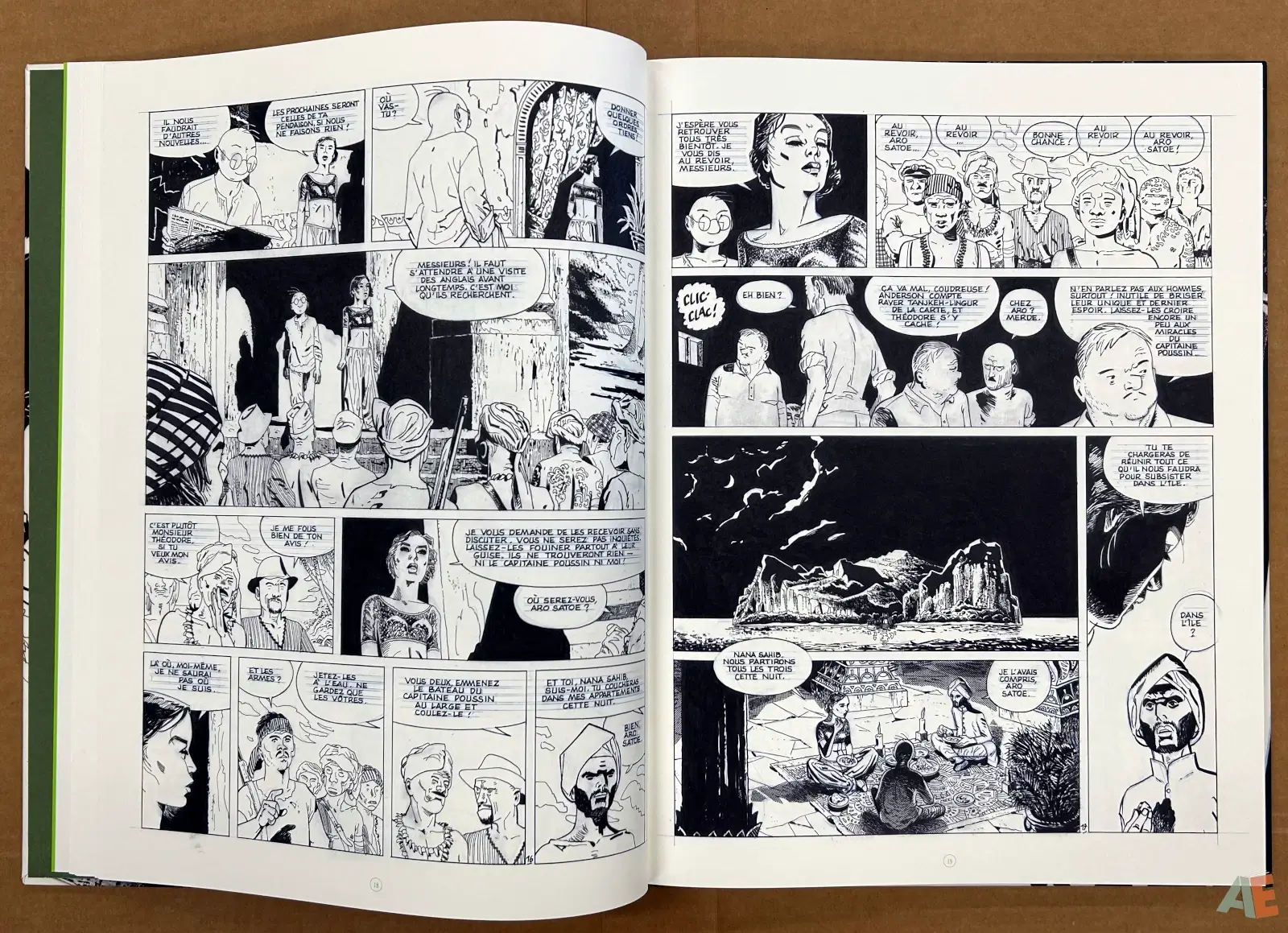
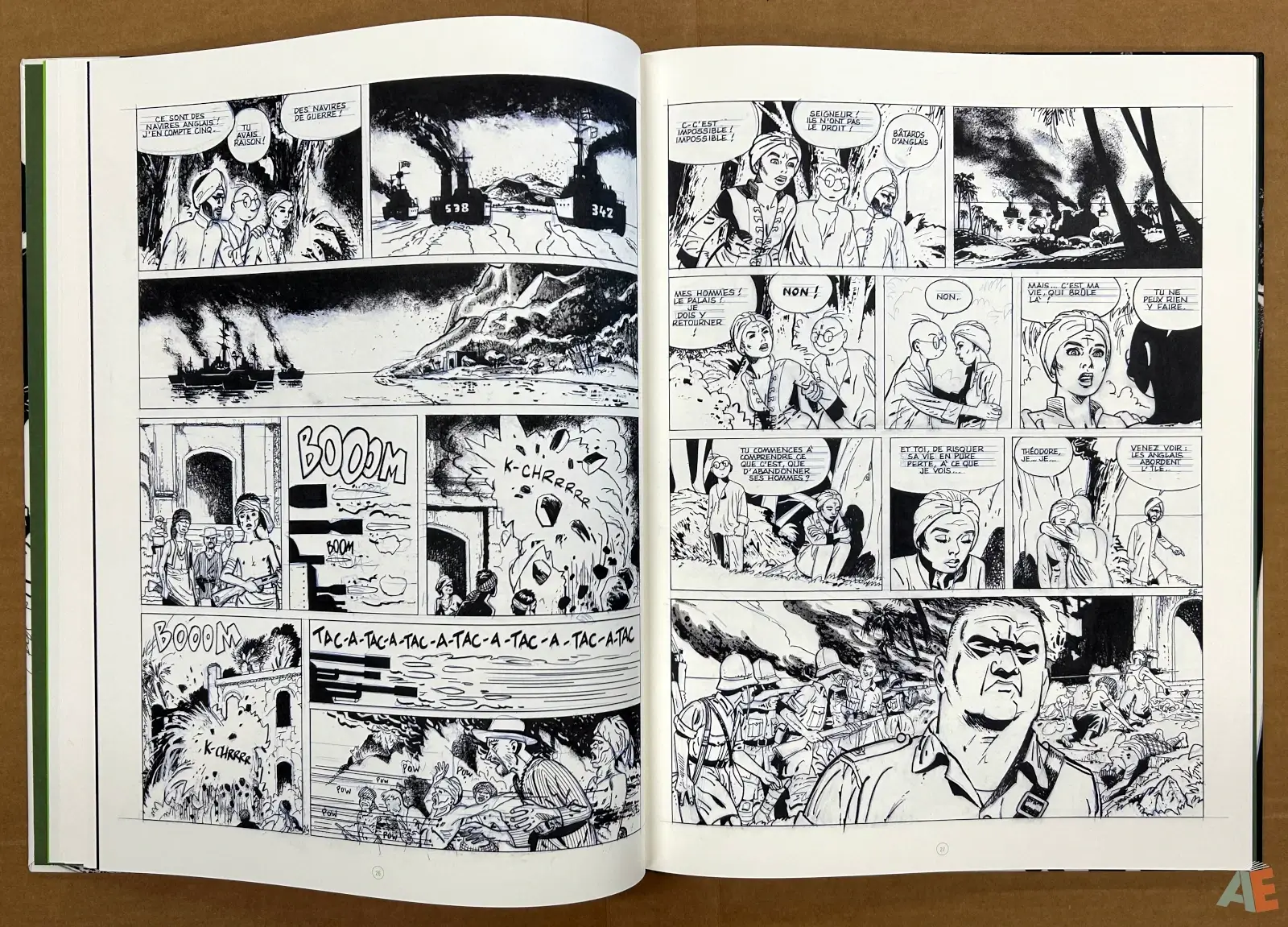
This is Théodore Poussin volume 14, Aro Satoe, presented in its original art boards. No extras. Along with the book comes a signed and numbered print out of 450. The numbering is in pencil and Le Gall’s signature in black ink. The publisher’s blurb says 399 copies, but they must have added more when printing.
The art presents wonderfully: all scans are clean and without issue. We’re treated to blue pencils left on most pages, outlining figures, the shape of heads, and more. The inks shows gradients. We get some wash throughout. The word balloons have blue pencil lines for the text. No margin notes, but that feels like a design choice to trim for just the art. There is some graphite pencil and the occasional correction fluid.
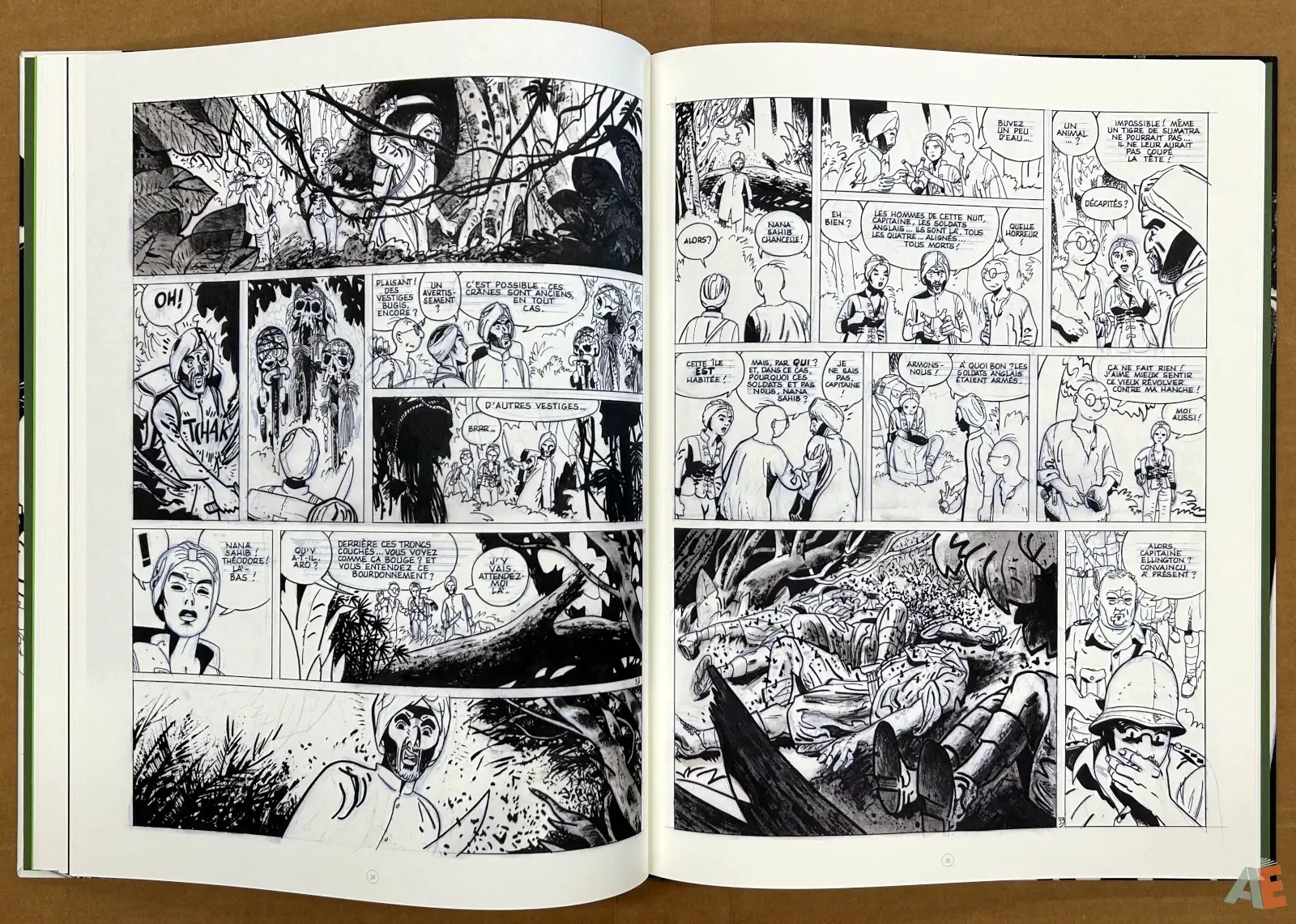
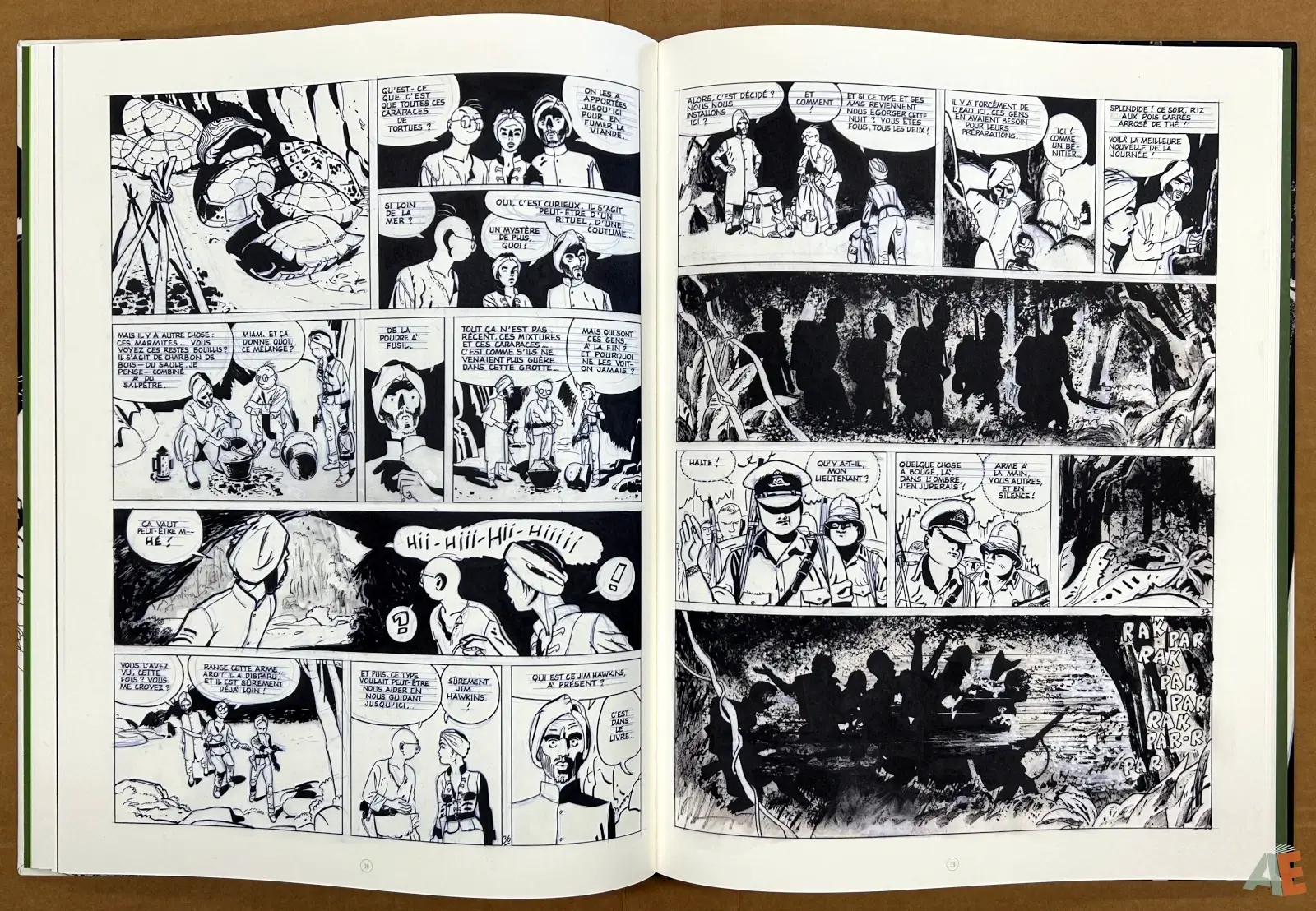
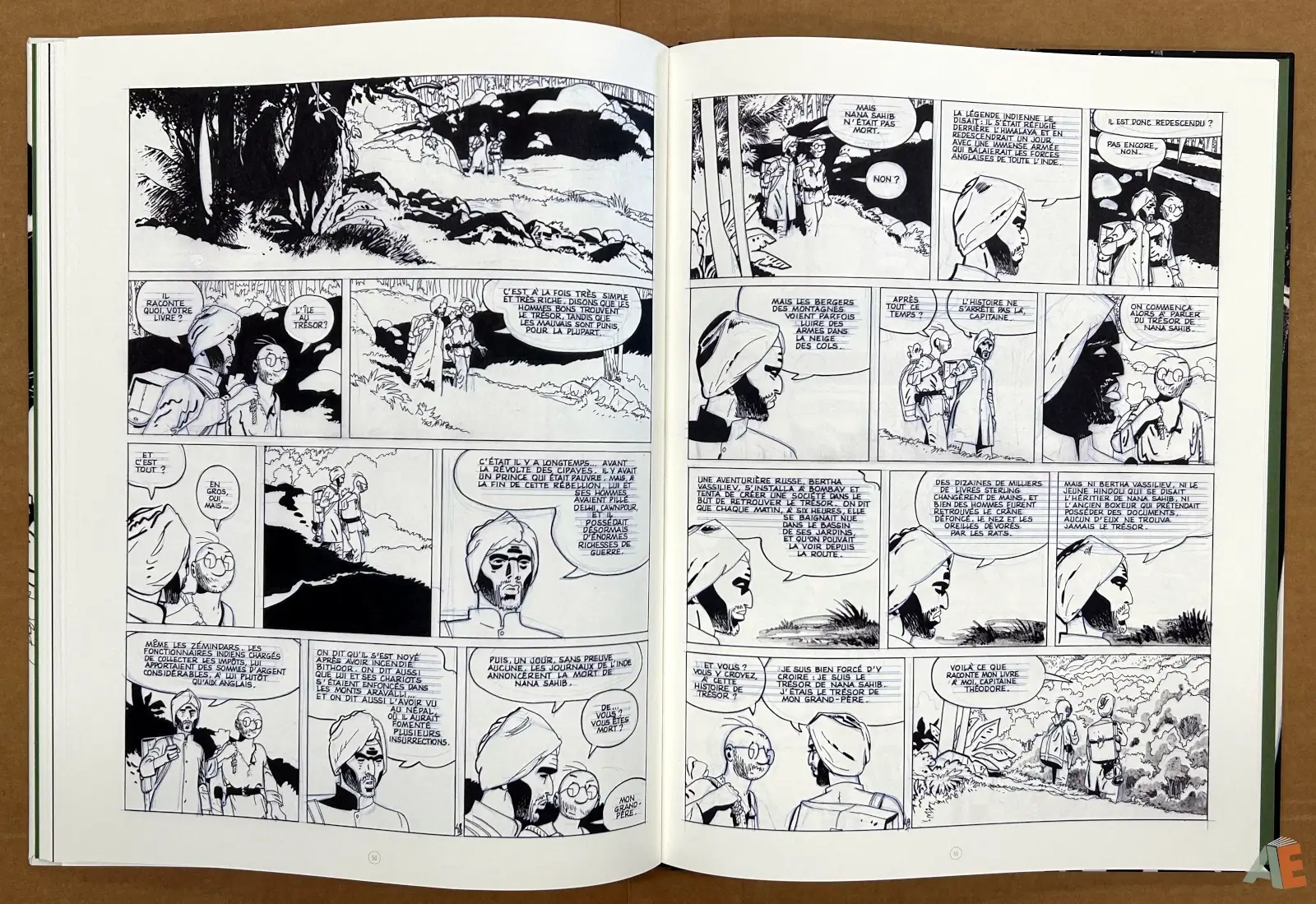
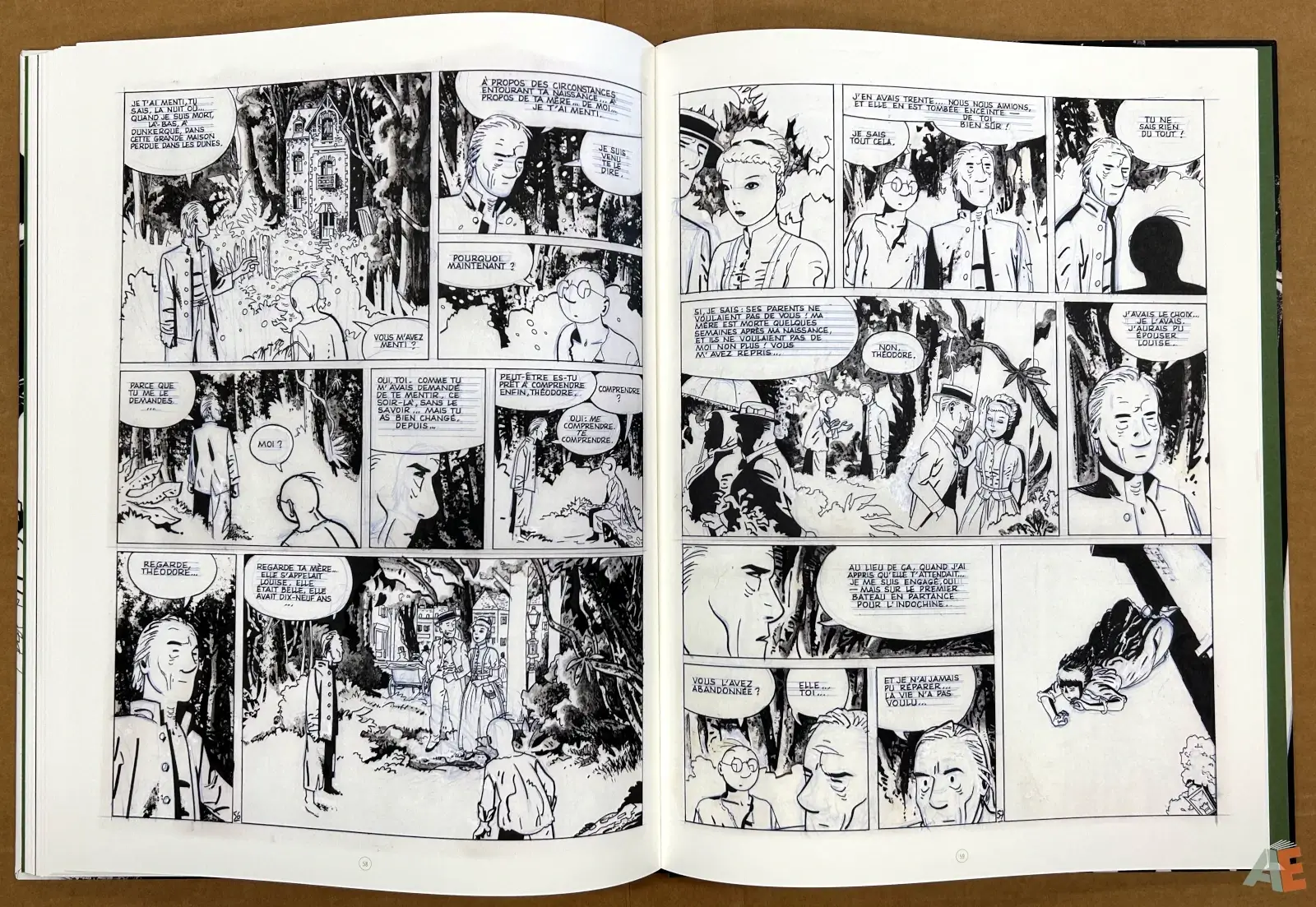
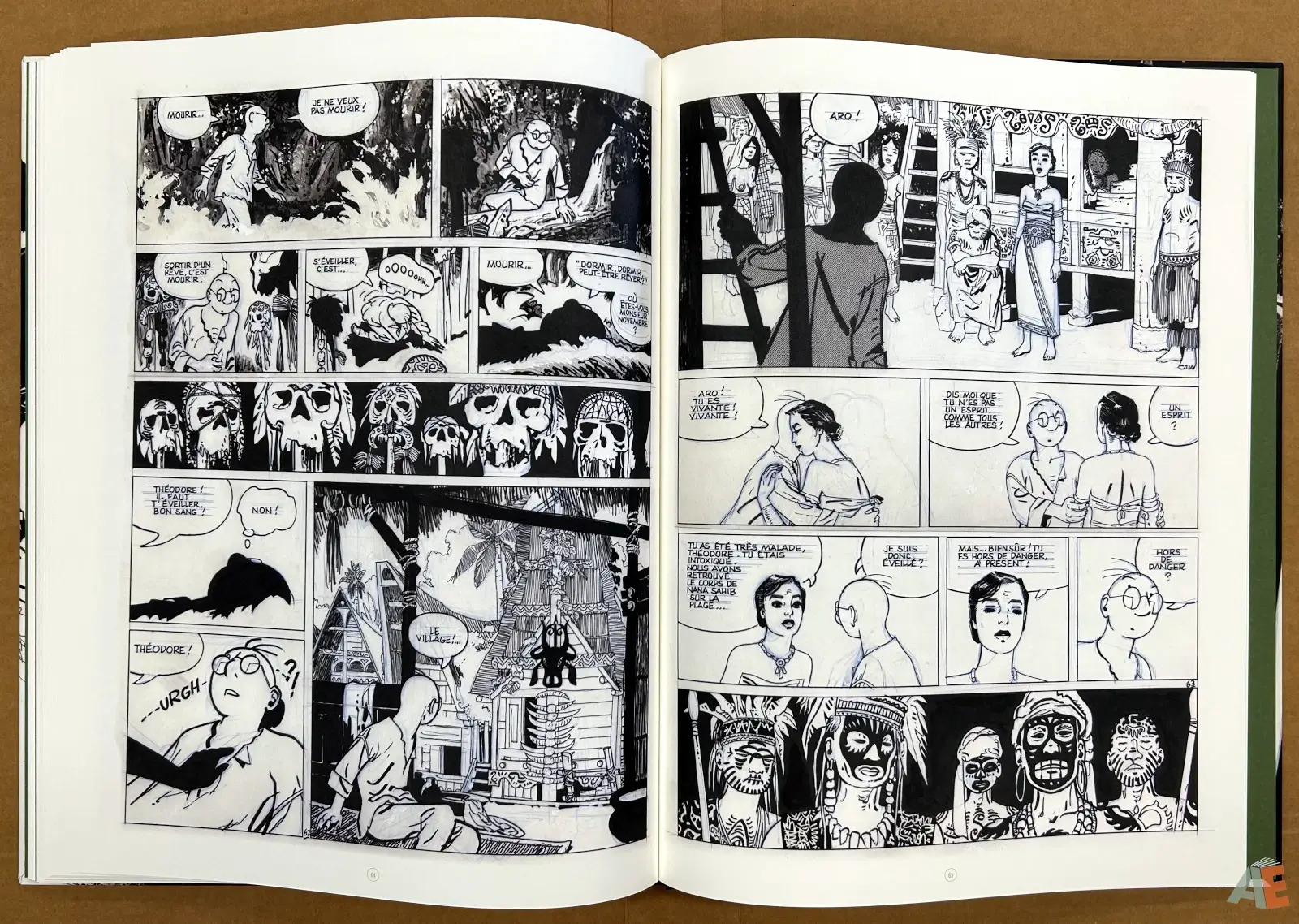
The design is simple and meant to present the artwork at its best. No fillers or extras here: plain endpapers, full images with no text on the front and back covers. Not even the title along the spine. Each page is numbered in a faint font with a circle.
Production is excellent: a sewn binding of heavy matte paper, 150 gsm Munchen. The book lays mostly flat when the center is smoothed. A high quality binding with a quarter cloth spine. The book comes in a bubble wrap bag inside a cardboard mailer, which has a small sticker showing the ISBN and price. This was the way Dupuis packed their AE format books before the Artiste Edition line.
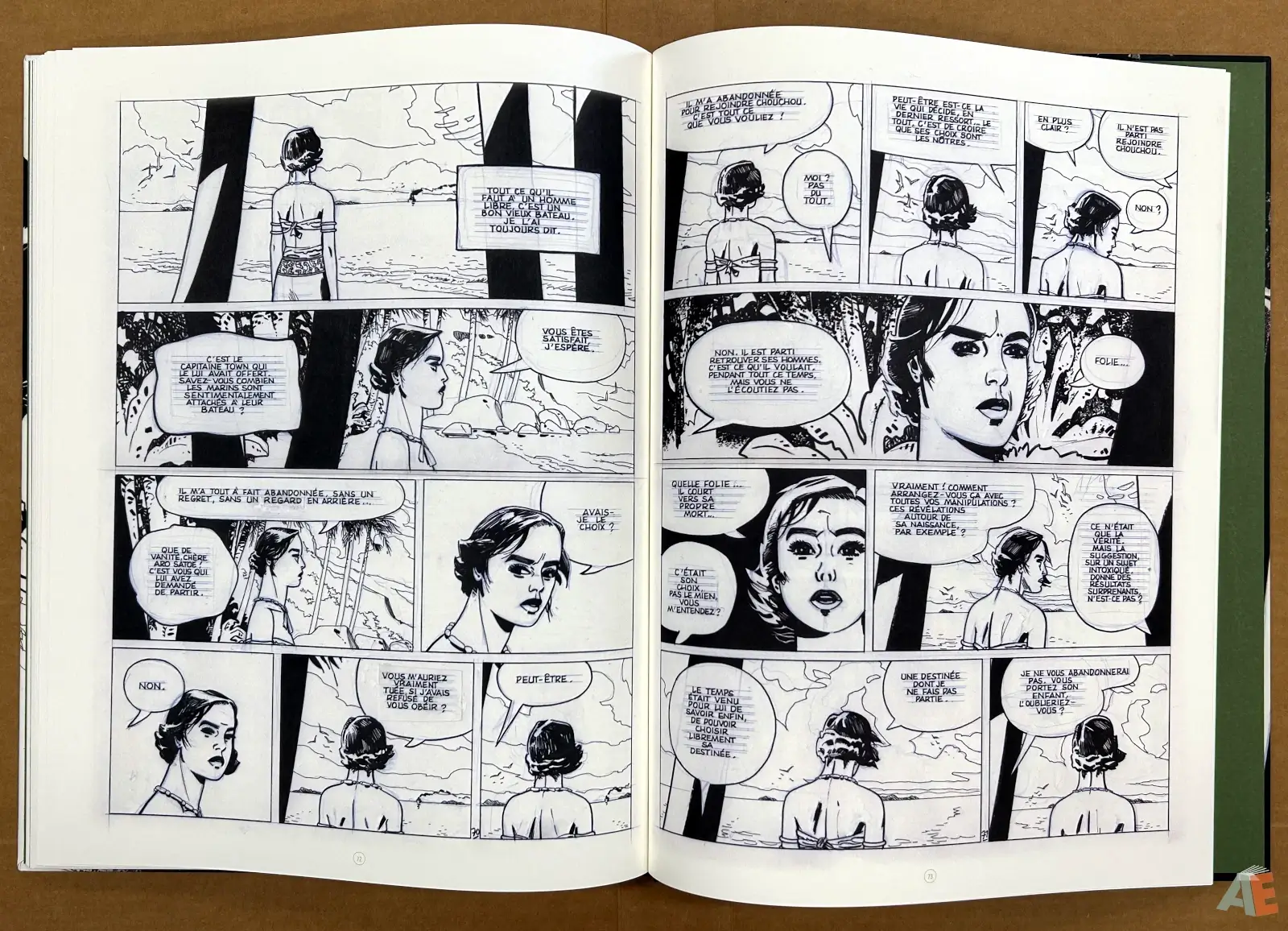
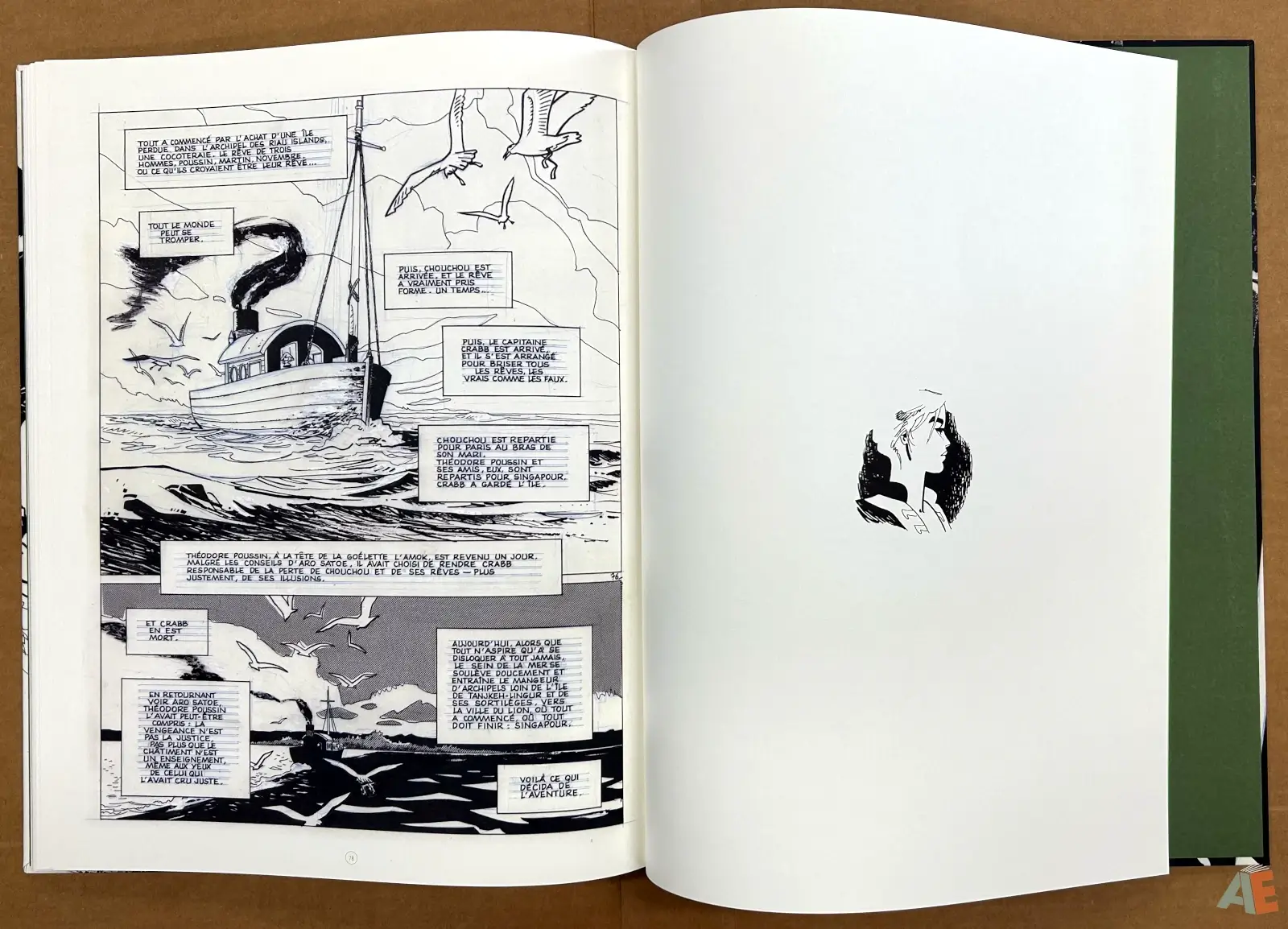
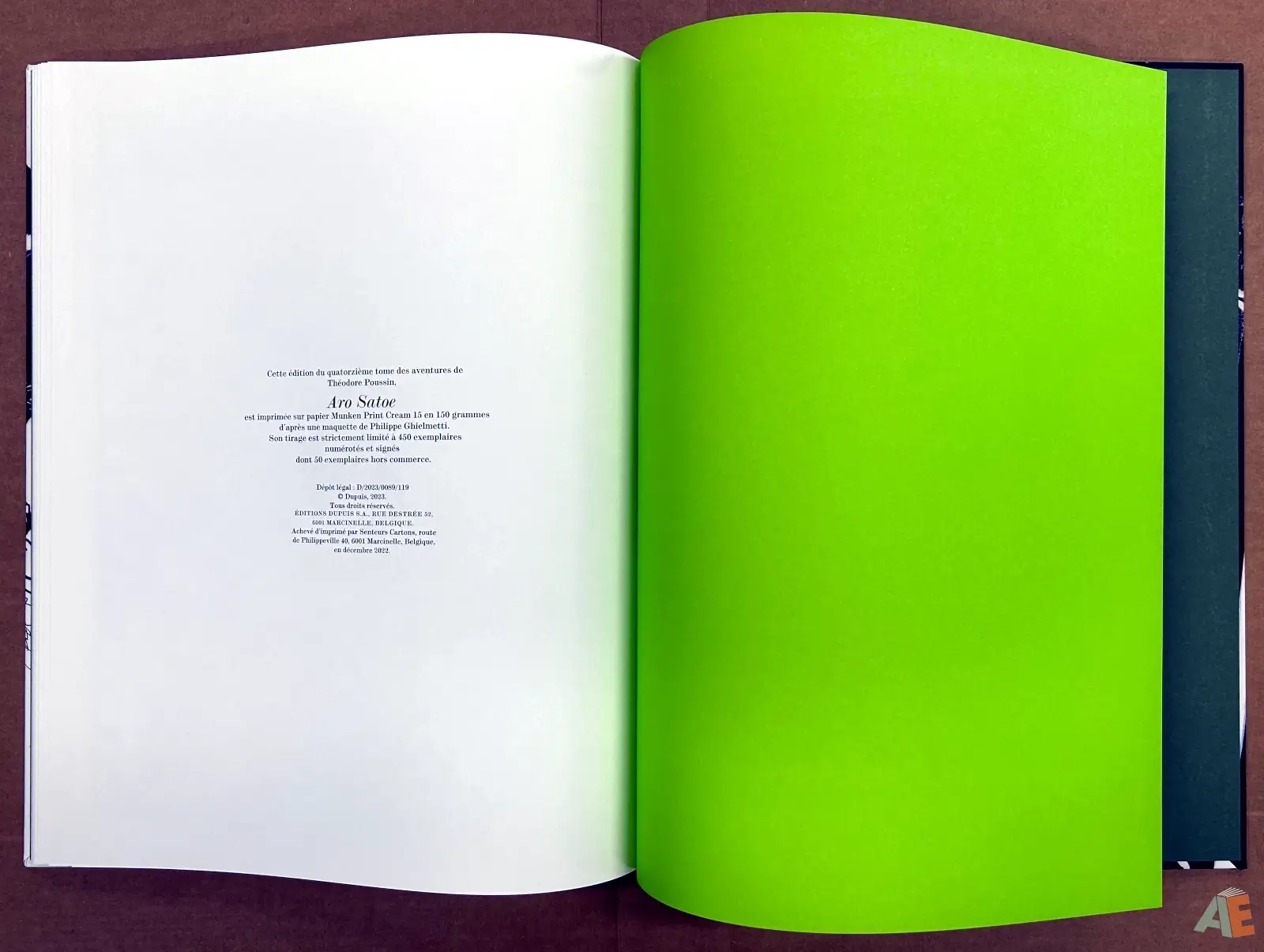
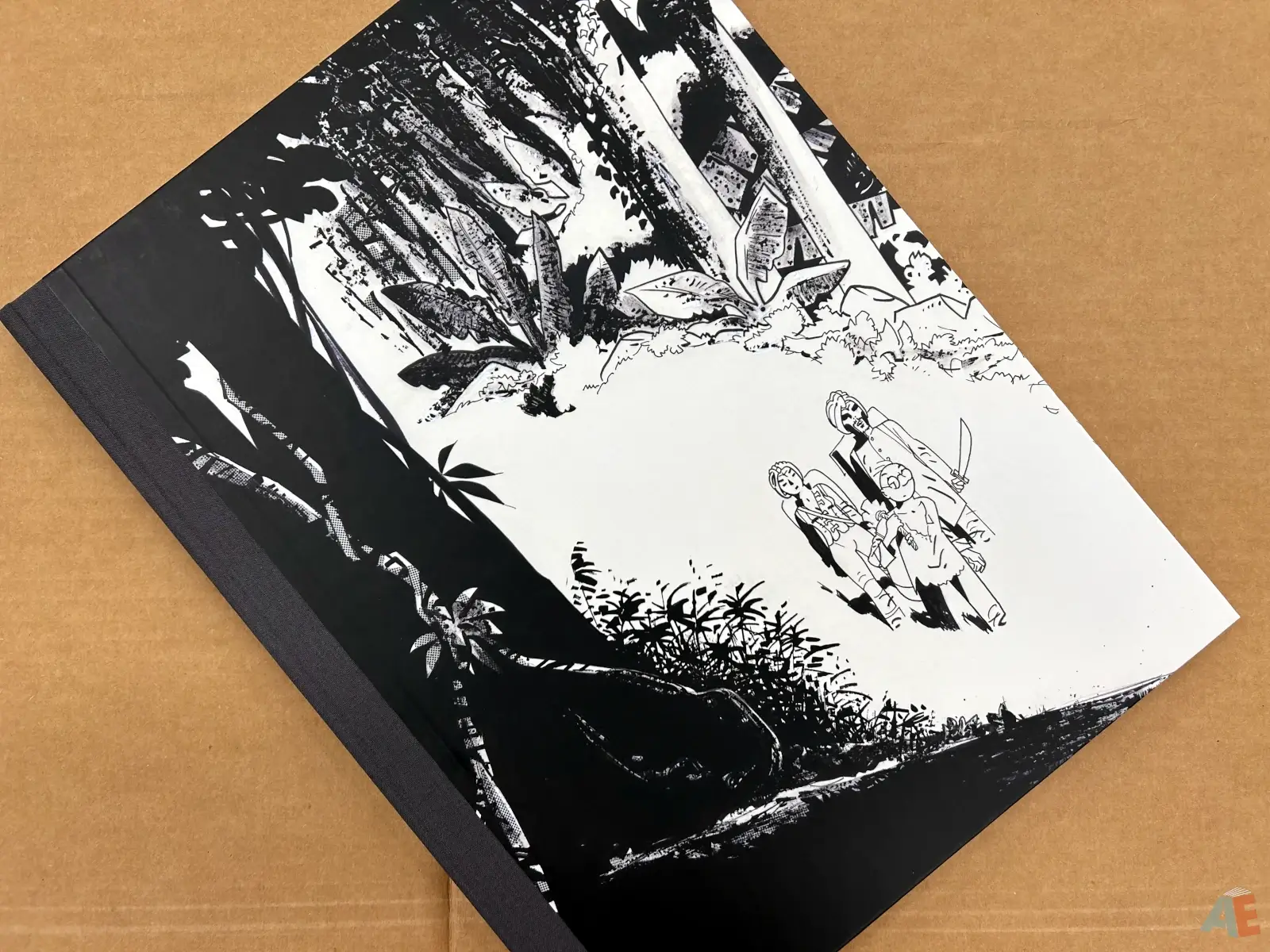
I don’t understand Dupuis’ decisions regarding AE format books and naming. This could easily fit into their Artiste Edition line, but perhaps they thought the material was too new. It makes following or chasing down AE format books quite difficult when even within one company they’re using multiple names for the same format.




